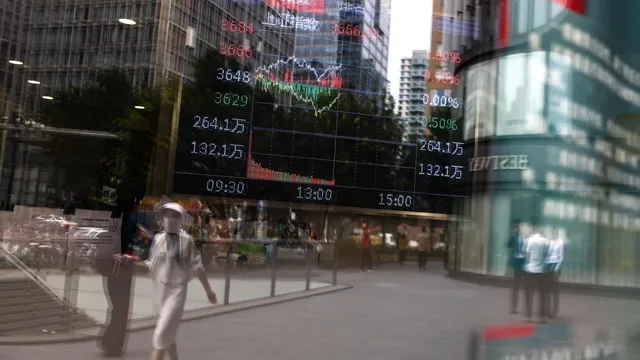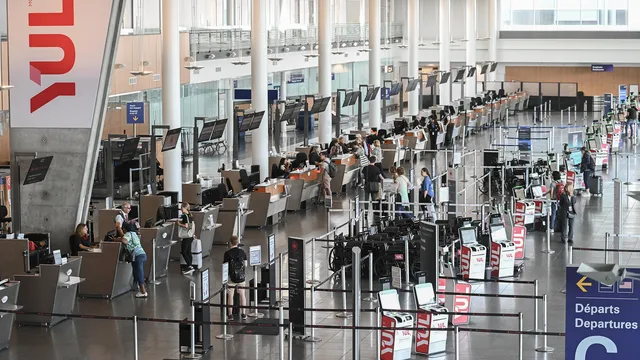Three years after a real estate sector crisis of historic scale, China is beginning to show tentative signs of recovery, Euronews reported. But for the world’s second-largest economy, long seen as a driver of global growth, the path ahead remains uncertain, as the fallout from the property slump continues to weigh heavily on sentiment, investment, and consumption.
The most entrenched weakness remains the housing sector. New-home prices in 70 major cities fell by 3.2% year over year in June 2025, extending a decline that began in 2022. Although the pace of decline eased slightly from the 3.5% drop in May, it underscores the sector’s persistent frailty. “It’s hard to conclude that the sector has exited the crisis,” said Helen Qiao, Bank of America’s chief economist for China, in a report. “We expect an 8–10% decline in new-home sales and a 15–20% contraction in housing starts this year—similar to the pace in 2023–24. The downturn remains prolonged.”
She added: “If we look at the duration and depth of the current cycle, it is indisputably the most severe since the commercialization of the property market in the late 1990s.”
The property slump has exerted deflationary pressure on the broader economy, with consumer prices declining year over year for much of the past three years. China’s real GDP has stabilized around 5% annually—well below the nearly 7% average in the five years before the pandemic.
The gap with the United States has widened significantly since the pandemic. China’s nominal GDP rose from $18.2 trillion in 2021 to $18.7 trillion at the end of 2024, while the U.S. economy grew from $23.7 trillion to $29.2 trillion over the same period.
Markets reflect this divergence. By mid-August 2025, the Shanghai Composite Index was trading at the same level as at the end of 2021, after a nearly 30% drop in the interim. By comparison, the S&P 500 has risen 40% over the same period, supported by strong consumption and leadership in artificial intelligence and technological innovation. The market capitalization of the seven largest Chinese companies is $2.4 trillion—far below $19.5 trillion for the seven leading U.S. companies.
Although a full trade war was temporarily averted after a double 90-day freeze on additional U.S. tariffs, the environment remains tense. “We see a risk of increasing the existing 10% reciprocal tariffs on China,” Qiao said. “Let’s not forget that China currently faces about 40% effective tariffs.” She explained: “An 11% prior rate from Trump’s first term, 20% fentanyl-related tariffs, and 10% reciprocal tariffs.”
A partial removal of fentanyl-related tariffs is possible, which would lower the effective rate to 30–35%—a decrease of 5–10 percentage points. But uncertainty remains high. “Any perception that one side is not fully honoring its commitments could trigger a renewed escalation of tensions,” Qiao warned. She also pointed to possible sanctions over China’s continued imports of Russian crude oil.
U.S. Treasury Secretary Scott Bessent noted in an interview that at the latest G7 summit in Canada, leaders discussed the possibility of imposing 200% tariffs on China over purchases of Russian crude—but the proposal did not receive support from European partners.
In response to weakening domestic demand, Chinese policymakers in August 2025 launched two interest-subsidy programs aimed at stimulating household consumption and supporting businesses in the services sector. They include a fiscal subsidy of 1 percentage point for consumer loans taken between September 2025 and August 2026, as well as targeted subsidies for enterprises in eight service industries.
Qiao called the initiative significant in scale: “For the first time, the central government is offering interest subsidies for personal consumer loans.” But she expressed doubts about its impact: “A 1% subsidy on borrowing costs is unlikely to meaningfully influence the purchase decisions of those who need to take out a loan to spend.”
As Beijing’s efforts to stabilize the economy become more targeted, the challenges are as structural as they are cyclical. Sentiment remains fragile, and analysts are reluctant to call a turning point. “We believe the latest credit policy can help support a recovery in household loan demand from current low levels,” Qiao said. “However, the magnitude of the impact remains in question.”
For now, China’s economic recovery remains tentative—caught between weak fundamentals in the property sector, cautious consumers, and an uncertain geopolitical environment. |BGNES

 Breaking news
Breaking news
 Europe
Europe
 Bulgaria
Bulgaria







